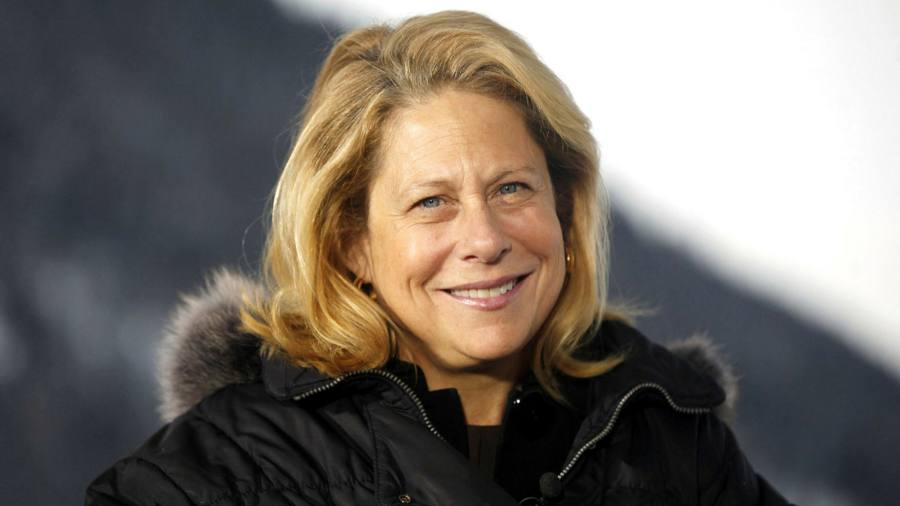[ad_1]
Executive musical chairs is a favourite game of the mining industry. Why then did Glencore take so long to find a seat for former Anglo American boss Cynthia Carroll?
Covid-19 got the blame for Glencore missing a government endorsed target of having women make up a third of the board by the end of 2020 — though it was already a big ask in an industry where most senior executives are male. Meanwhile, aside from her couple of years as chair of Vedanta Resources, Ms Carroll has looked underemployed ever since quitting Anglo in 2013.
Had Glencore wanted to meet gender quotas, something could surely have been agreed earlier. The big question from her appointment this week as a non-executive director at the Switzerland-based commodities house is not so much “why?†as “why now?â€
Suspicions begin with Ivan Glasenberg, who never left the impression of being the biggest fan of Ms Carroll’s approach. Glencore’s longstanding chief executive has been scathing of bosses who pursue grandiose projects that blow through budgets, whereas cost overruns at Anglo’s city-sized Minas Rio mine in the Brazilian jungle were what hastened Ms Carroll’s departure.
Glencore’s operational approach sometimes tilted towards expediency, whereas Ms Carroll caused rifts on the Anglo board by preaching a gospel of safety and community engagement. And while both executives look more at home in Davos than at Indaba, the charge of preferring the company of plutocrats to pit-workers was more wounding to her than him.
But with Mr Glasenberg now preparing to retire after two decades in charge, Glencore is at a crossroads. His successor is fellow South African Gary Nagle, a company veteran who arrived at the Baar headquarters at around the same time as Mr Glasenberg’s elevation to chief executive. Mr Nagle’s first challenge will be to shake any impression of being a yes-man to his former boss, who has already pledged to retain his equity stake of just over 9 per cent.
Owning so much of the company meant that Mr Glasenberg could live off dividends rather than fret about long-term incentive plans, which blunted the board’s ability to hold him to account. Mr Nagle does not have that luxury. He needs back-up. With Glencore chairman Tony Hayward at the end of a nine-year term recommended by the corporate governance code, finding a strong replacement is a priority.
Though Glencore insists that the appointment is routine business following the retirement of non-executive director Leonhard Fischer, it gives a strong hint about life post Ivan. Ms Carroll knows how to push back against a shareholder that seeks to steer the board, having waged a long battle against South Africa’s government-owned Public Investment Corporation while at Anglo. Her efforts then could not save her job, but the experience might yet prove valuable.Â
Exorcising the curse of Woodford
It might be overblown to describe an investment trust as haunted, but in the case of Schroders’ UK Public Private Trust it might just be true, writes Jamie Powell.
Once part of Neil Woodford’s now extinct empire, the £318m closed-end fund was taken over by the UK-based asset manager in October 2019. Yet, judging by the performance since, the ghost of the stricken star fund manager still lingers. September’s net asset value showed a whopping 33 per cent drop year on year. The shares trade at a pessimistic 21 per cent discount to the underlying portfolio.
It is not hard to see why. By all accounts, Woodford’s approach to his private investments was unbound. There was too much cash deployed at heady valuations. Some of the companies promised products which defied science and, to boot, he often committed further funds which the companies could call upon when they wanted to. Even a year after Schroders inherited the trust, it was still reaching into its pockets for cash that Woodford had agreed to provide.
The efforts by fund managers Tim Creed and Ben Wicks to mould this ragtag portfolio of biotech, challenger banks and wireless internet providers into shape, however, are beginning to pay off. Last month it recorded its first big win when Sanofi of France bought biotech hopeful Kymab for about £800m, netting the trust £65m not including a further £25m of contingent payments. A week ago, it offloaded some of its investments to private equity at a smaller discount than implied by the share price. Factor in these deals alongside its sale of Ombu in December and a back-of-a-napkin calculation of its net asset value comes to about 46p per share, almost a quarter below where it traded on Wednesday morning.
It is impossible to know when, or even if, the discount will close. But there are two developments that might be catalysts.
Speculation is rife around a float for Oxford Nanopore, the trust’s second-largest holding. Last summer, Jefferies analyst Ken Rumph estimated that it might be worth up to £4.5bn, almost triple the previous valuation from January 2020. In more concrete news, Immunocore, the fund’s fifth-largest holding, last month announced a Nasdaq listing. Any one of these deals has the potential to boost the NAV materially.
Haunted houses can be a tough sell. But with the curse of Woodford beginning to lift, investors might consider the UK Public Private Trust to be less terrifying than they might imagine.
Glencore: bryce.elder@ft.com
UK Public Private Trust: jamie.powell@ft.com
[ad_2]
Source link





